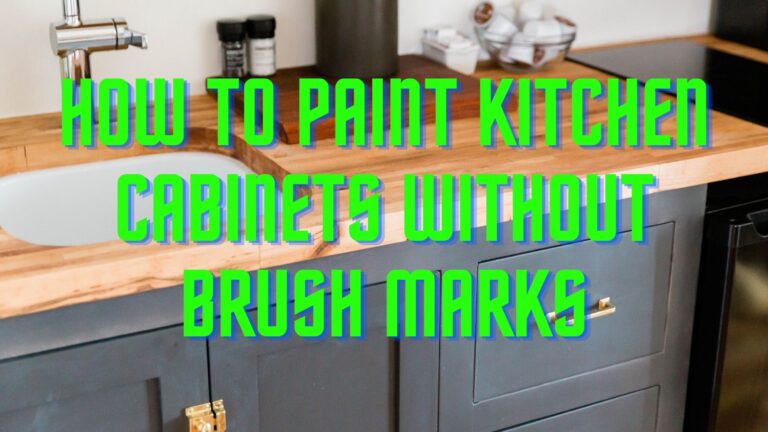How to Stop a Crack in Wood from Spreading
Having cracks in your wood, be it interior(tea table, wooden tables) or exterior house furniture(railings, patio boards), is inevitable.
Wood wears out over time as a result of aging, warping and moisture. Although your wood might crack in various ways, it doesn’t necessarily mean you have to dispose of your wood. All you have to do is follow the simple steps on how to stop a crack in wood from spreading, which is specifically outlined in this article just for you!
Once you notice cracks in your wood, you must take necessary preventive actions to avoid the cracks spreading all over the wood, and one beautiful thing is that you don’t have to be a pro before you stop cracks in your wood.
All you have to do is identify the crack and the most suitable method for the type of crack present in your wood, follow the outlined steps, and you’ll have your wood sitting well as new!
All at a Glance
Methods on how to stop a crack in wood from spreading

There are various methods on how to prevent cracks in wood from spreading, but for this article, we will be treating two basic methods which are easy and effective to use, which are
- The use of wood filler or wood epoxy
- Use of sawdust and glue
Although both methods work for wood cracks, they have their specifications in that wood filler works best for preventing cracks in the wood that are fairly broad, elongated and slim, while the sawdust and glue method is best for widened cracks.
You might be wondering which of the two you should go for. Making your choice depends on the nature of the cracks. You should note that if the crack goes way around the wood, the most suitable method to use is epoxy.
The cracks and relatively thin, and epoxy will seep through the cracks, bond with the wood and fill it while the wood filler is most suitable for medium-sized cracks.
Also, if you plan on sanding, staining or painting your wood, it is better to stick with wood filler as it bonds well to the wood and won’t faze irrespective of the amount of sanding. Wood fillers take longer to dry when compared to epoxy. Sawdust and wood glue are suitable to use when cutting on expenses and working with broad cracks.
Method one: The use of wood filler or wood epoxy
You can either use wood filler or wood epoxy. The liquid epoxy fillers are good for wood with cracks with depth because the liquid has a form of litheness with it that makes it move easily, seeping into the wood. Wood fillers are easy to use, and the following steps below will guide you on applying wood filler or epoxy.
Steps on how to apply wood filler or epoxy in cracks
Step one: Pick either wood filler or epoxy
You can’t use wood filler and wood epoxy together; you can only choose one out of the two because they give different results.
First off, you need to know how each functions and what they work for specifically before deciding which of the two you want to go for.
Wood epoxy works best with impenetrable areas than wood fillers because they’re very light and thin and can penetrate impervious areas and thin cracks. In the case of extended cracks, epoxy is the most suitable as it forms a strong bond with the wood and fills the crack.
Wood fillers are the best suitable for surfaces with broad cracks or missing short pieces of wood. One amazing thing about wood fillers is that they’re affordable, and once they’re fixed and dried, you can sand and paint. It is necessary you sand and paints the wood so that it won’t look odd from the rest of the wood.
You can choose either of the wood crack preventing method depending on the nature and extent of the crack but regardless, both methods prevent cracks in the wood.
Step two: Protect yourself

Working with these chemicals might be hazardous if you don’t protect yourself, which is why you must protect yourself while working with these chemicals as they’re composed of chemicals.
You must get yourself a standard respirator to guard your lungs against the fumes because wood epoxies are poisonous and pungent, most especially if you’re going to be working indoors.
More so, either you’re working with epoxy filler or epoxy. You must get safety goggles as they’ll protect your eyes from chemicals spilling into your eyes which might damage your lens. To prevent getting your fingers or body sticky all over, you can wear long-sleeved clothes as well as gloves.
Step three: Clean and prepare the wood
Before you decide to apply your epoxy or wood filler, you’ll have to prepare your wood by cleaning it. I’m sure you’re wondering if that is necessary. It is important you clean your wood by washing it off with water and a bit of mild detergent, scrub it down, wash through with water and finally allow it to dry totally.
After ensuring the wood is dry, the next thing is to eliminate any form of trash. It is necessary to remove any form of trash because it will get in the way of the cracks that need to be filled, and both epoxy and wood filler will find it hard to bond to the wood.
Clean the debris no matter how small it might be. That will help you to know the extent of the crack. If you notice the crack extends to the other side, you might have to cover the wood with masking tape to cover the wood underneath to prevent the epoxy or wood filler from leaking out from underneath.
Step four: Apply
When using the epoxy, you’ll need to mix because it is in two forms, resin and hardener. You can add a bit of color so that the epoxy will match that of the wood.
To activate your epoxy, you’ll have to mix them as directed by the manufacturer and ensure you mix them efficiently to fill the whole crack. You don’t necessarily have to mix your wood filler. All you have to do is stir, and yours good to go. Apply and fill up the crack.
Step five: Allow drying
After applying either of the two, allow it to dry for at least a day. However, epoxy dries way faster than wood filler. After drying, you can use a permanent marker to add color to the wood and sand and paint the wood.
Method two: Use of sawdust and glue
The use of sawdust and glue is the most suitable and affordable method of preventing broad and not too deep cracks. The following outlined steps will guide you on how to apply this method.
Steps on how to apply sawdust and wood glue in wood cracks
Step one: Get your sawdust and wood glue ready.
First off, get your sawdust. You can get a bag or make your sawdust out of scrap wood or brand-new wood to match the color of the wood. To get a standard wood glue as much as possible.
Step two: Apply
There are two ways in which you can apply the sawdust alongside the wood glue. You can choose to fill up the crack halfway with glue, then cover the remaining part with sawdust, add glue and cover up with sawdust.
You can also fill the wood crack with glue and afterward cover it up with sawdust. Make sure you exert little pressure on the sawdust to enable it to bond with the glue.
Step three: Allow it to dry.
After applying sawdust and wood glue, give it ample time to dry for at least a day. Once you realize it is totally dry, sand the wood a little to smoothen it out, and then you can go on to stain it.
Pro-tips
When working with wood cracks or wood in general, there are basic things you need to take note of;
- Always ensure the surface of the wood is clean before working on it.
- After cleaning, give the wood ample time to dry
- When dealing with wood cracks, make sure you remove all form of trash
- Always ensure you work in a well-ventilated area, and if you choose to work indoors, make sure you protect yourself with a respirator, safety goggles, gloves and long-sleeved clothing. These will protect you from choking or spilling hazards.
- Before using your epoxy, ensure both resin and hardener are thoroughly mixed together.
- After applying any of the methods above, make sure you give the wood enough time to dry.
Conclusion – How to stop a crack in wood from spreading
Wood cracks happen naturally, but that doesn’t mean you have to get rid of your wood. So far, we’ve realized various methods for stopping cracks in wood, be it light, broad, long or widened cracks.
Each type of crack has its preventive method that has proven to be simple and highly proficient. After treating your wood, you must keep your wood from unnecessary moisture and, most importantly, water.
Important Reads:







